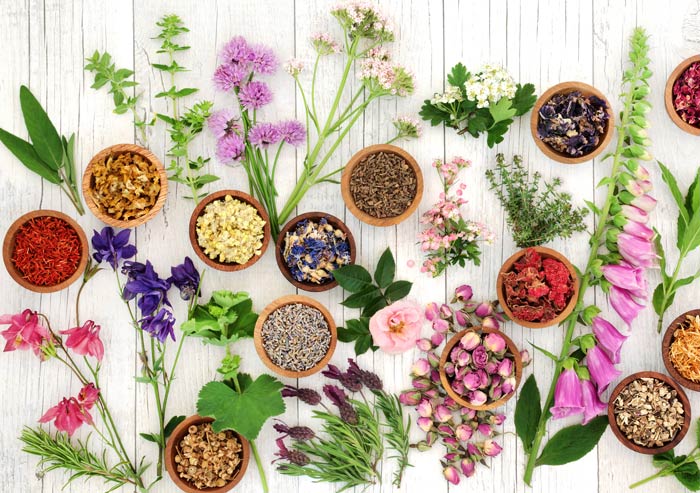Society has come a long way from the “take two aspirin and call me in the morning” wellness approach. Evolving information about maintaining good health appears in the news all the time. While some options might be a tad suspect—harkening back to the days of traveling salesmen with snake oil and mysterious elixirs—modern science supports more integrative wellness approaches that include a whole foods diet, regular exercise, and some holistic modalities.
Defining the Term Holistic
The definition of holistic is rather simple: it’s full consideration of a person’s whole health, not just applications for easing symptoms. This includes not only the physical state, but also mental and emotional wellness, and any contributing societal or environmental factors.
One aspect of wellness is how to manage stress. Whether you’re newly recovered from substance abuse or living a full life of sobriety, stress will happen. The effects of it manifest physical, emotional, and mental symptoms. It can be caused by outside influences, chronic health conditions, and environmental factors.
Holistic Techniques
So when physicians and other health practitioners talk about solutions for managing stress, they don’t simply give you two aspirin. They recommend various popular holistic techniques to help you calibrate the effects of stress. For example, they might suggest the following:
- Try some breathing techniques.
- Practice relaxation exercises and activities such as massage, meditation, reiki, tai-chi, or yoga.
- Find ways to foster gratitude each day and maintain a positive attitude.
- Don’t fall back on compulsive behaviors or substance use to manage stress—it will only worsen as a result.
- Exercise regularly to prompt the “feel good” chemicals in your brain to flow more freely.
- Choose a whole foods diet and avoid processed meals, fast or fried food, and fat-filled meals.
- Establish healthy boundaries and develop better time management.
You’ll notice that you’ve heard all the recommendations on this list before: from your doctor, your counselor at an inpatient rehabilitation program, a 12-Step sponsor, a spiritual advisor—even a concerned friend or family member. No snake oil, no weirdness. Just common sense and an understanding that our minds, bodies, and spirits are all connected.
Along with the above, here are some additional holistic options you might find helpful for recovery.
Holistic Options to Use in Daily Life
Even if some of these suggestions seem a little “out there,” they won’t harm you. They might be unusual and not what you’re used to, but keep an open mind and a lighthearted attitude about trying a new approach. Who knows? Maybe a method will really resonate with you, and you’ll find out how much you enjoy it!
Acupuncture
The National Center for Complementary and Integrative Health remains cautiously optimistic about acupuncture, a traditional Chinese medicine method. Science supports the use of acupuncture to relieve chronic pain conditions such as migraines and other headaches, neck and back issues, and hip and knee problems. Tiny needles stimulate connective tissue, muscles, and nerves. This helps to increase blood flow, minimize pain signals, and activate the body’s natural pain killers. It’s imperative to seek out a certified and licensed acupuncturist.
Aromatherapy
A sprinkle of lavender on your pillow to relax. A bit of peppermint to perk you up in the afternoon. A wisp of soothing eucalyptus to ease your stuffy nose. The Mayo Clinic cites research stating that while extensive studies into aromatherapy are limited, there’s proof that “stimulating smell receptors in the nose sends messages through the nervous system to the limbic system—the part of the brain that controls emotions.” Further, some aromatherapy health benefits include better sleep, less anxiety and depression, and general overall wellbeing. Essential oils are made by distilling plant extracts. Although these oils aren’t regulated by the Food and Drug Administration (FDA), pure-quality products are considered safe when used as directed.
Biofeedback
Therapists skilled in this technique use devices to monitor your heart rate, breathing, muscle contraction, and even brain waves to determine stressors, chronic health conditions or pain, and anxiety. Then, they teach you relaxation and breathing techniques to help you modulate the nervous system and manage those issues. For example, the Mayo Clinic indicates biofeedback can “pinpoint tense muscles that are causing headaches. You then learn how to make deliberate changes in your body to relax those muscles and reduce pain.” While the FDA has approved a biofeedback device used by licensed practitioners, home devices aren’t cleared yet. You’ll often find a qualified practitioner associated with a physical therapy office.
Forest Bathing
Okay, if you don’t want to call it this, refer to it as a refreshing walk in the woods! But choosing to be outdoors for as little as five minutes each day is one of the easiest holistic treatments you’ll find. “Green exercise” improves sleep, reduces anxiety and depression, creates a better sense of calm, helps lessen pain, allows for a more enhanced connection to the world and other people—which in itself may reduce loneliness and prompt greater community interaction.
Progressive Muscle Relaxation
This is such a simple technique, you may wonder why you’ve never done it before. Progressive muscle relaxation (PMR) is a method to release tension throughout your body by lying down in a comfortable spot, then slowly tensing and releasing muscles while focusing on focused inhales and exhales. This helps reduce anxiety and fatigue, promotes better sleep, and revitalizes oxygen through the bloodstream, which helps you calm down and ease muscle pain. Here’s a quick PMR tutorial from the Georgia Southern University. Or you can try an mp3 of a PMR guided session.
Treating the Whole Person at Willingway
We believe addiction is a disease of the total person: body, emotions, mind, and soul. So we offer our clients integrated self-care techniques to achieve lasting health. If you or someone you love needs a better path to wellness, our admission staff is available anytime to answer your questions.

